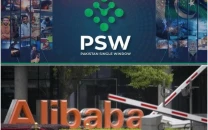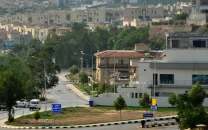Navigating towards sustainable growth
While economy has averted crisis, growth forecasts remain subdued

In this article, I offer some insights into Pakistan's current economic trajectory and the challenges that lie ahead. This review highlights key areas such as growth, stability, inflation, tax policies and fiscal discipline, providing a nuanced understanding of the nation's economic health.
Over the past three years, Pakistan's economy has shown resilience, moving from a state of high inflation and low growth to a phase of low inflation and recovery. While the economy has averted a crisis, growth forecasts remain subdued. This transition signifies a move in the right direction but also indicates that sustained efforts are required to achieve robust and lasting growth.
The subdued forecasts suggest underlying structural issues that need to be addressed for more optimistic projections. The country's journey from near-collapse to a recovery mode is a testament to its resilience but also a reminder of the vulnerabilities that persist.
Stability and C/A dynamics
Pakistan's current account has achieved stability, a crucial development for maintaining economic equilibrium. However, this stability hinges on timely rollovers and meeting export and remittance targets. Dependence on external factors for maintaining stability highlights potential risks and uncertainties. Any disruptions in these areas could destabilise the economy.
In the short term, uncertainties around the Trump Tariff remain one possible source, though it can also trigger opportunities. In the medium term, continued access to the EU market in the wake of India-EU free trade agreement (FTA) should remain an important goal. Diversifying sources of income and enhancing domestic productivity are vital to ensure long-term stability and reduce reliance on external aid and remittances.
Inflation and monetary policy
The headline inflation has declined significantly, but overall price levels have not followed suit. Core inflation, which is almost 9%, continues to be the linchpin of monetary policy, indicating the challenge of managing inflationary pressures.
The reduction in headline inflation is encouraging, but the persistence of high price levels suggests underlying structural issues in the economy. Managing core inflation requires a multifaceted approach that addresses demand-side and supply-side constraints.
Furthermore, transparent and data-driven monetary policies are crucial for maintaining public confidence and ensuring economic stability. A reduction in interest rate from 22% to 12% is a significant positive development and private sector credit has started to increase.
Tax policies and tariffs reform
Pakistan's tax policy is undergoing positive changes with the expansion of the tax net to more sectors. However, tax rates remain "punitively high." The government's intention to abolish the non-filers category is a step in the right direction, however, half of the current tax filers do not contribute anything. This structural problem of tax collection needs to be addressed to maximise revenue.
Customs tariff reforms have also been initiated, indicating a broader effort to overhaul the tax system. Reducing tax rates while broadening the base could stimulate economic activity and increase overall tax revenue. The tax structure has significant implications for businesses, investments and overall economic activity.
Fiscal discipline, public expenses
Historically, the actual current expenditures have surpassed budgeted levels, while development spending has fallen short. Currently, the fiscal trajectory aligns with the budget, which is a positive development. Public expenditures on subsidies have declined from 16.2% in 2022 to 7.2% in 2024, indicating a more focused approach to resource allocation.
Defence expenditures have also seen a reduction, falling from 22% to 12.4% of total expenditures, though a substantial increase is imminent. However, the increasing gap between budgeted and actual expenditures on the Public Sector Development Programme (PSDP) is concerning. Efficient allocation of funds can significantly boost economic growth.
Revenue losses, tax evasion
On the upside, almost Rs9 trillion is stuck in the system and even a partial recovery can bring dividends without burdening the existing taxpayers.
The Tax Expenditure Report 2024 indicates a revenue loss of Rs3,879 billion due to tax concessions and exemptions. Income tax, sales tax and customs duty losses are substantial, highlighting significant gaps in tax collection. Additionally, the annual tax revenue loss due to illicit trade is estimated at Rs750 billion. Furthermore, Rs4,457 billion in tax revenue is stuck in over 100,000 court cases. Addressing these issues is critical for increasing government revenue and improving the fiscal health. The government needs to strengthen tax enforcement, streamline legal processes and formalise the undocumented economy.
Conclusion
The budget 2025-26 presents an opening. While progress has been made in certain areas, significant challenges remain. The government must focus on maintaining stability, controlling inflation, reforming the tax system and ensuring fiscal discipline. Addressing tax evasion and the undocumented economy is also crucial for enhancing revenue collection. These efforts will pave the way for sustainable economic growth and prosperity. The nation's ability to navigate these economic challenges effectively will determine its future trajectory.
The writer is the founder and executive director of PRIME, an independent economic policy think tank





















COMMENTS
Comments are moderated and generally will be posted if they are on-topic and not abusive.
For more information, please see our Comments FAQ